What is LED Tubelight ?
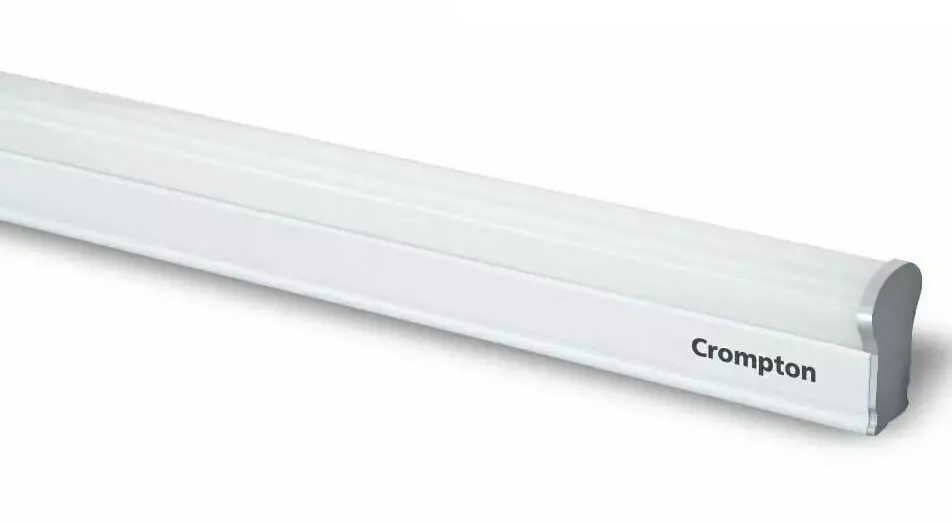
An LED tube light is a type of lighting fixture that uses Light Emitting Diodes (LEDs) to produce light. These tubes are designed to replace traditional fluorescent tube lights and offer several benefits, including higher energy efficiency, longer lifespan, and better light quality. LED tube lights come in various sizes and configurations to fit standard lighting fixtures and are commonly used in residential, commercial, and industrial applications.
How is LED Tubelight is different from conventional Florescent tubelight ?
LED tubelights and conventional fluorescent tubelights differ significantly in several key aspects. LED tubelights utilize Light Emitting Diodes (LEDs) to produce light through the movement of electrons in a semiconductor material, resulting in a highly energy-efficient and long-lasting lighting solution. They consume about 50% less energy than fluorescent tubelights and typically have a lifespan ranging from 25,000 to 50,000 hours, compared to the 7,000 to 15,000 hours typical of fluorescent tubes. Moreover, LEDs provide better light quality with higher color rendering indexes (CRI) and are available in various color temperatures, offering more consistent and focused illumination. In contrast, fluorescent tubelights rely on a gas discharge process involving mercury vapor and an inert gas like argon or krypton. This process emits ultraviolet (UV) light, which then excites a phosphor coating to produce visible light. The presence of mercury in fluorescent tubelights poses environmental and health risks, requiring careful disposal and recycling. Additionally, fluorescent tubelights are more prone to flickering, require a warm-up period, and emit more heat, which can increase cooling costs. While the initial cost of LED tubelights is higher, their superior energy efficiency, longer lifespan, and lower maintenance needs make them a more sustainable and cost-effective choice in the long run.
Also Read – How Florescent tubelight works ?
Types of LED Tubelights
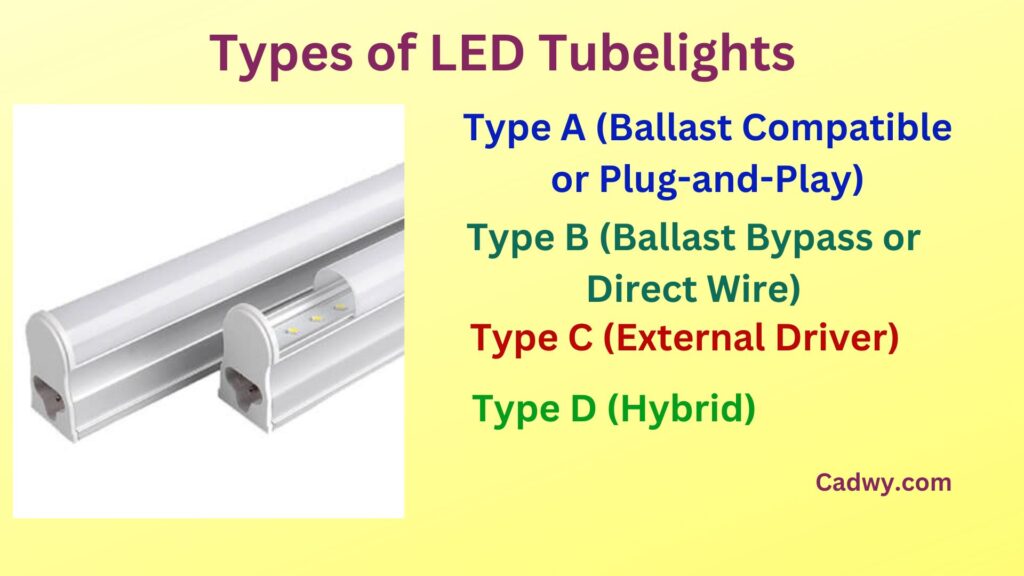
-
Type A (Ballast Compatible or Plug-and-Play)
- These are designed to work with the existing fluorescent ballast. They are the easiest to install as they simply replace the fluorescent tube without any rewiring.
-
Type B (Ballast Bypass or Direct Wire)
- These require the existing ballast to be removed and direct wiring to the power source. They are more energy-efficient as they bypass the ballast.
-
Type C (External Driver)
- These use an external driver to power the LEDs, similar to how integrated LED fixtures work. They often offer the best performance and longest lifespan.
-
Type D (Hybrid)
- These are versatile tubes that can operate with or without a ballast. They provide the flexibility to start with a plug-and-play setup and later switch to a direct wire configuration.
Working Principle of LED Tubelights (How LED Tubelight works ?)
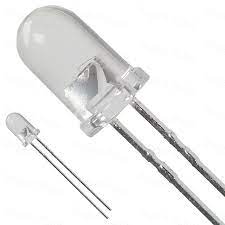
Basic Concept of tubelight LED working- LED tubelights consist of multiple Light Emitting Diodes (LEDs) arranged along the length of the tube. Each LED is made of a semiconductor material, typically a combination of elements from groups III and V of the periodic table (e.g., gallium arsenide, gallium phosphide). When an electric current flows through the semiconductor material, it energizes electrons within the material. The electrons gain energy and jump to a higher energy level within the semiconductor’s band structure. As the electrons return to their original energy level (valence band), they release energy in the form of photons (light particles). This process is called electron-hole recombination, where an electron recombines with a positively charged hole (a vacancy in the electron structure). The energy of the photons emitted corresponds to the band gap of the semiconductor material. LEDs are designed to emit light at specific wavelengths determined by their semiconductor composition, which determines the color of the light produced (e.g., blue, green, red). That’s how LED in the Tubelight emit light.
LED tubelights consist of several key components, each playing a crucial role in the operation and performance of the light fixture. Here are the main components typically found in LED tubelights and their functions:
1. LED Chips
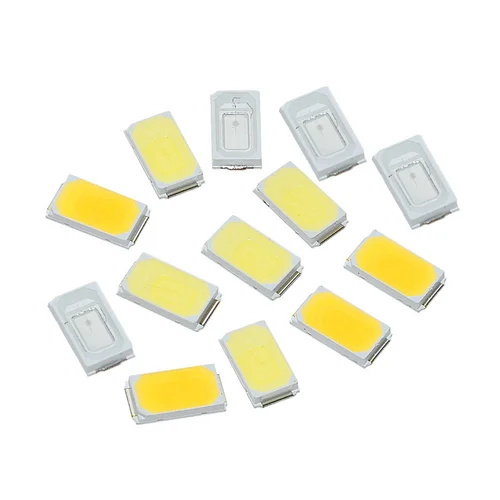
- Function: LED chips are the light-emitting components of the tubelight. They are made of semiconductor materials (such as gallium arsenide or gallium nitride) that emit light when an electric current passes through them.
- Use: LED chips are arranged in a linear configuration along the length of the tubelight to produce light. They determine the brightness (lumens) and color temperature (e.g., warm white, cool white) of the emitted light.
2. Heat Sink
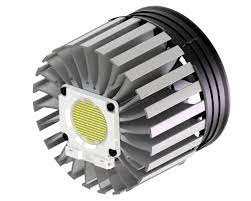
- Function: LEDs generate heat during operation. A heat sink is a passive component designed to absorb and dissipate heat away from the LED chips to maintain optimal operating temperatures.
- Use: Prevents overheating and ensures the longevity and reliability of the LED tubelight by managing thermal energy effectively.
3. Driver (Power Supply)
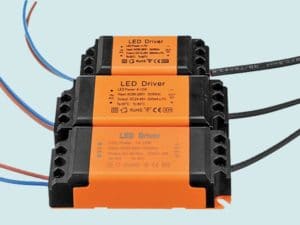
- Function: Converts incoming AC (alternating current) voltage to the DC (direct current) voltage required to power the LEDs. It also regulates the current flowing through the LEDs to ensure stable operation.
- Use: Provides the necessary electrical power and controls to the LEDs, ensuring consistent light output and protecting them from voltage fluctuations.
4. Lens or Diffuser
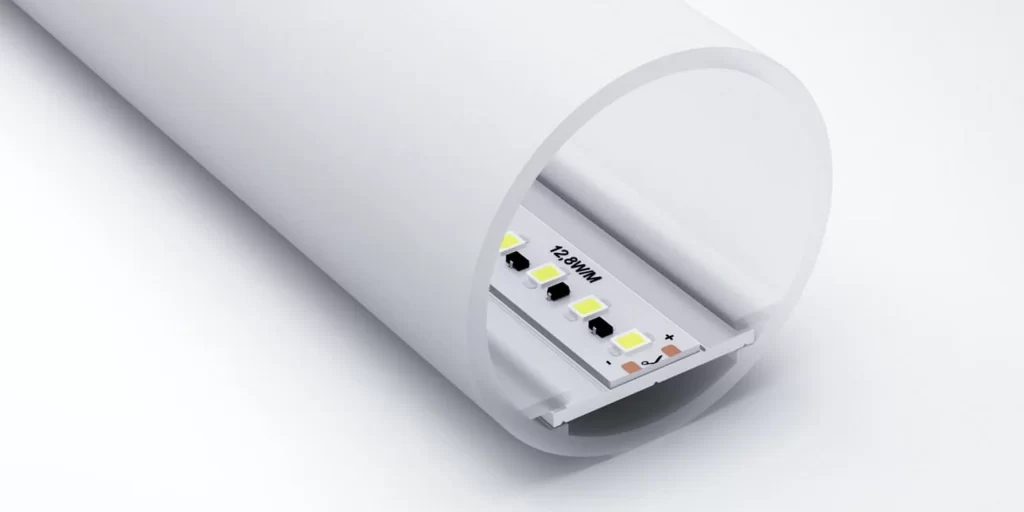
- Function: A lens or diffuser is placed over the LED chips to distribute and control the direction of light emitted from the tubelight.
- Use: Ensures uniform light distribution, reduces glare, and enhances the visual appearance of the lighting.
5. Printed Circuit Board (PCB)

- Function: The PCB provides mechanical support and electrical connections for the LED chips, driver, and other electronic components.
- Use: Acts as a platform to mount and interconnect all components securely, facilitating efficient electrical connections and heat dissipation.
6. Housing and End Caps
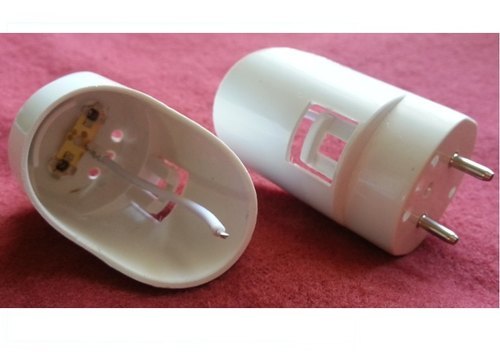
- Function: The housing encloses and protects the internal components of the tubelight, while end caps provide mechanical support and connectivity to the power source.
- Use: Ensures structural integrity, durability, and safety of the tubelight assembly.
7. Reflectors (optional)

- Function: Reflectors may be included to enhance light output efficiency by redirecting stray light back towards the desired direction.
- Use: Improve overall light distribution and efficiency in the intended area of illumination.
8. Wire Harness and Connectors
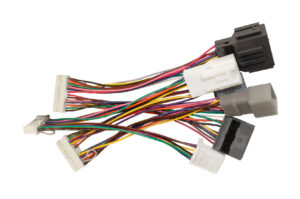
- Function: Wire harnesses and connectors provide electrical connections between the driver, PCB, and external power supply.
- Use: Facilitate easy installation, maintenance, and replacement of the LED tubelight.
9. Optical Design Components (optional)
- Function: Optical lenses, diffusers, or reflectors can be integrated into the tubelight design to control light dispersion and achieve specific lighting effects or distributions.
- Use: Customize the lighting output for different applications, such as task lighting, ambient lighting, or architectural lighting.
LED tubelight circuit diagram
Here is a simple LED tubelight circuit diagram illustrating how an LED tubelight works. Please note that not all LED lamps use the exact same circuit.

Advantages of LED Tubelight
LED tubelights offer several advantages over conventional Florescent tube lights such as
- Energy Efficiency: Use significantly less energy, leading to lower electricity bills.
- Longer Lifespan: Last up to 50,000 hours or more, reducing the need for frequent replacements.
- Instant On: Provide immediate full brightness without flickering or warm-up time.
- Better Light Quality: Offer higher Color Rendering Index (CRI) and various color temperatures.
- Environmentally Friendly: Contain no hazardous materials like mercury and are easier to dispose of.
- Durability: More robust and less prone to breakage compared to glass fluorescent tubes.
- Heat Emission: Generate less heat, reducing cooling costs and risk of burns.
- Maintenance: Lower maintenance costs due to longer lifespan and reliability.
- Compatibility: Easily compatible with dimmers and smart lighting controls.
- Safety: Reduced risk of fire hazards and burns due to lower heat emission.